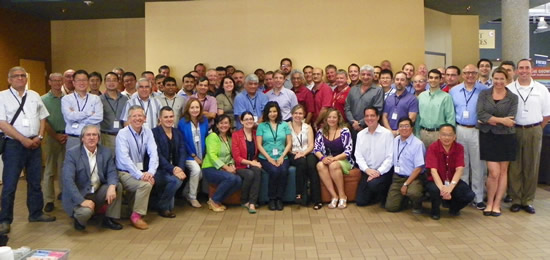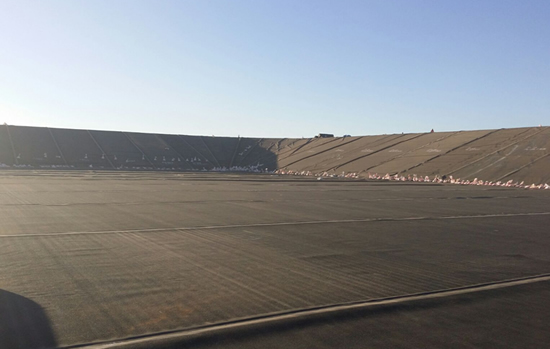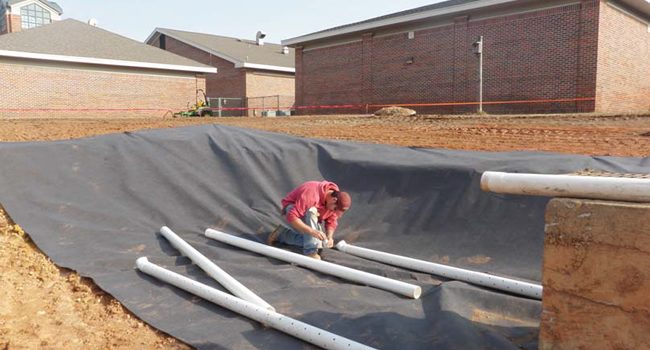A few years ago, the International Geosynthetics Society revived its Educate the Educators program. The initiative was developed in the early 1990s to help educate engineers, regulators, and academics about geosynthetic materials, which were flourishing in field use. More than 20 years later, the field of geosynthetics had grown enormously—but how to engineer with these materials had not become standard in college engineering curricula. In discussing the state of geosynthetics education with industry veteran Robert Mackey, we found that college, however, is far from the only place we need to look in focusing on education. We can’t ignore the engineers already in the field.
“When it comes down to using any material, it’s the level of confidence you have with it,” Mackey says.
Listen to “How to Improve Geosynthetics Education in the Field and at the College Level” on Spreaker.
GeoTalk is published on Tuesdays. Recent episodes:
- August 1: Perspectives on Puncture Protection for Landfill Lining Systems
- July 25: Jorge Zornberg on Differing MSE Design Frameworks
- July 18:George Koerner on Exposed Geomembrane Performance
- July 11: Pullout Anchor Testing in Erosion and Sediment Control
Subscribe on iTunes and in the Google Play store.
STATE OF GEOSYNTHETICS EDUCATION
The IGS Educate the Educators program has provided practical knowledge that can be incorporated immediately. But, as Robert Mackey points out, the program can reach only a small number of academic influencers at a time. Progress is being made in educating the next generation of engineers, but we need to view education through a larger lens—as something that is always on-going.

We are, as a field, doing many things well. Mackey cites Dr. Robert Koerner’s series of GSI Webinars (Geosynthetics Institute); Barry Christopher, Bob Holtz, and Dave Suits work in transportation engineering; and Rick Thiel’s seminars with ASCE.
Where is improvement needed? It isn’t just in reaching undergraduates.
“We can improve by doing design manuals,” Mackey says. “If you look at the pipe industry [for example], a manufacturer will give a book or catalog of their products and they’ll do another engineering design manual which is a step-by-step process. …. The engineer will use it as a basis and signify within a specification ‘This pipe OR equal.’”
With education on the college level, he notes the need to see geosynthetics education incorporated in fundamental science and engineering courses.

“You start in the basic sciences, engineering sciences,” Mackey says, “where you learn about the material it’s made from; then, you start understanding its limitations and advantages. … We don’t do a very good job in that area.”
And, if you focus on educational institutions, Mackey notes, we can’t just focus on reaching instructors. We must reach deans if we want to see geosynthetics education grow. We need to reach textbook authors. We also need to look at how today’s students learn—and that includes the many points of interaction and learning outside of the classroom (e.g., YouTube).
We need to look no further than P.E. exams, Mackey notes. You can still find questions relating to drainage of landfills lined in clay, despite the fact that landfills in the United States are not lined with clay only and haven’t been that way for more than two decades.
EDUCATION ECHOES
In our July 5 GeoTalk Podcast episode, Effective Education for Erosion and Sediment Control System Adoption, Dr. Eve Brantley of Auburn University also spoke on education gaps and how to bridge them. She noted, “We may all have the same goal: clean water … but, tailoring our message so that we reach those folks through workshops, meaning hands-on technology transfer, innovative websites, one on one contact … [enables us to] build that energy and enthusiasm so that we can continue to put good projects on the ground and share the why we are doing them along with the how.”

ROBERY MACKEY
Robert Mackey is a long-time contributor to the International Geosynthetics Society and its North American Chapter, for which he has previously served as President, and major standards organizations such as ASTM Committee D35 on Geosynthetics. He does his consulting work with the firm S2Li. Learn more about the company’s work at www.s2Li.com.
For information about the IGS Educate the Educators program, visit www.geosyntheticssociety.org.











